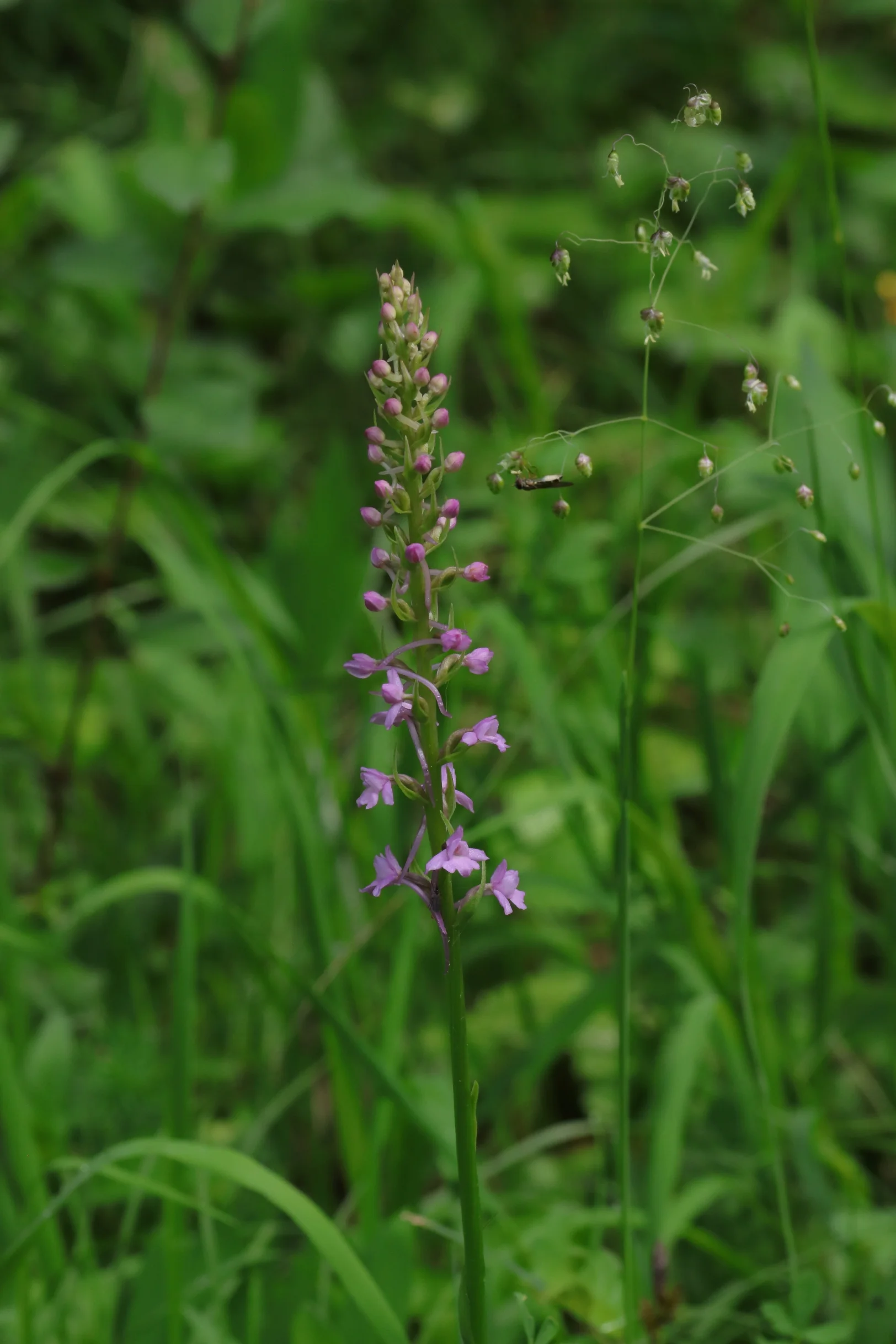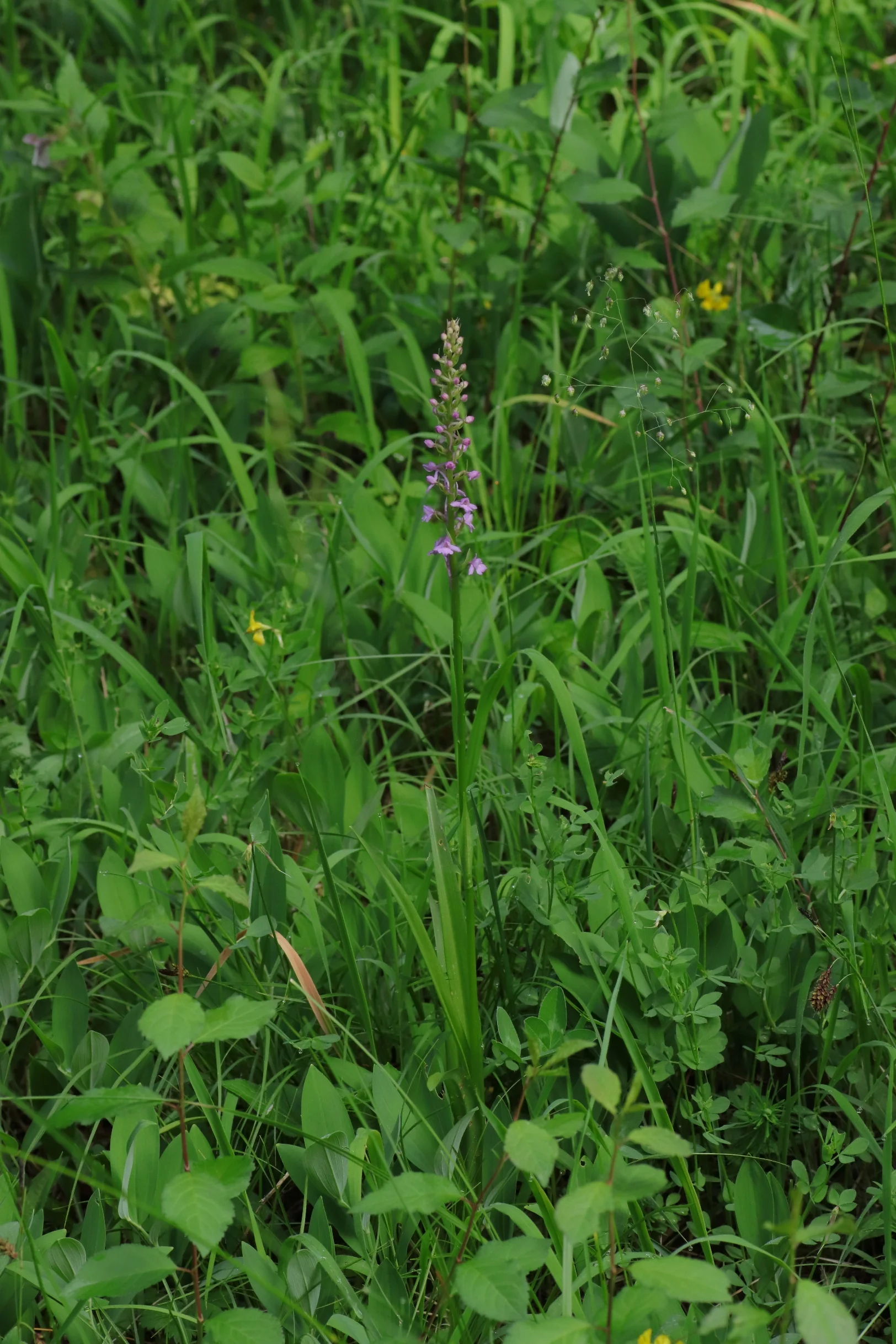Due to its size, the fragrant orchid can often be overlooked in forest meadows. Yet the small flowers are true works of art of nature.


Occurrence and distribution: The fragrant orchid only occurs on soil that is alkaline. It is mainly found in the south-east and in central Germany. Individual occurrences can also be found in other areas. The pictures on this page were taken in the Rehletal on the Hegaualb (an area in the southwest of Germany). The plant prefers a calcareous, low-nitrogen loam soil. It can therefore be found in sparse deciduous forests, slightly damp dry grasslands and in marshy meadows / fens. In the Alps, the plant can be found at altitudes of up to 2,500 metres. In Central Europe it is scattered.
Plant description
Growth form: The fragrant orchid is a perennial, upright growing plant. It has a herbaceous habit and reaches a height of between 30 and 80 cm (1 ft to 2 ft 6 in). The roots consist of a bulb that grows underground, which has a hand-shaped structure. The stem has a green base colouring – in the upper part it overflows reddish.
Leaves: The leaves are oblong-lanceolate and can reach a length of up to 50 cm (1 ft 6 in). They have a dark green colouring on the upper and lower side. The central mark is clearly visible on the upper side. The smaller stem leaves under the flowers converge at the end.
Flowers: The flowers are cygomorphic and have a three-lobed lower lip. The two outer petals stand out horizontally from the centre. The spur is very long and protrudes behind the flower. It is curved downwards and can reach a length of 1 to 2 cm (0,4 in to 0,8 in.). The flowers can have a light pink to dark purple colouring (rarely also white). They give off a strong sweet scent. This is said to attract butterflies as well as moths, hymenoptera and bees / bumblebees to pollinate the flowers. The flowering time is from May to August. Up to 140 individual flowers can form per inflorescence.
Fruits: After flowering, the small seed pods form. These consist of a large number of small seeds. Due to their low weight, they can be carried out by wind. The fruit ripens in August to September.
Folk names & name origin
Folk names: The fragrant orchid is known by various popular names. These include “Großer Händelwurz” (great fragrant orchid), “Fliegen-Händelwurz“ (fly fragrant orchid) or also “Langsporn-Händelwurz“ (longspur fragrant orchid).
Name origin: The name “Mücken-Händelwurz” can be derived from the individual parts of the word. The German name “Händelwurz” refers to the shape of the root. This is remotely reminiscent of a hand. The botanical genus name of the plant “Gymnadenia” is derived from the Greek words “γυμνὸς” (gymnos) – meaning “bare, unclothed”, “αδὴν” (ades) and “ένος” (enos) – meaning gland. While the botanical species name “conopsea” is derived from the Greek word for “mosquito”. This word has its etymological origin in “conops” – translated into english: mosquito.
Endangerment of the plant
Endangerment of the plant: The fragrant orchid is classified as non-endangered on the German Red List.
Verbreitungs-Codes: A, AV, M1, M2